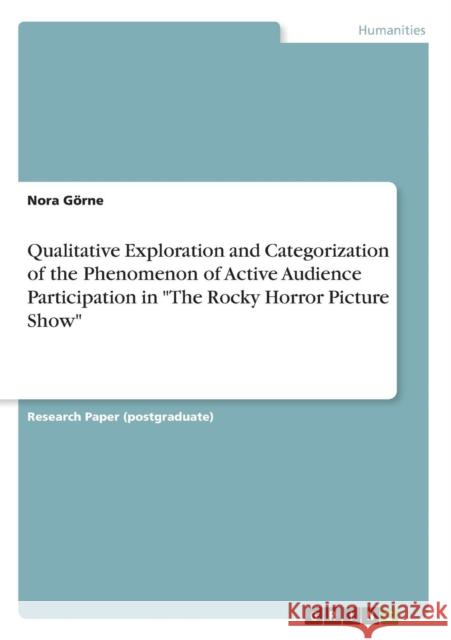Qualitative Exploration and Categorization of the Phenomenon of Active Audience Participation in The Rocky Horror Picture Show » książka
Qualitative Exploration and Categorization of the Phenomenon of Active Audience Participation in The Rocky Horror Picture Show
ISBN-13: 9783656090861 / Angielski / Miękka / 2011 / 32 str.
Qualitative Exploration and Categorization of the Phenomenon of Active Audience Participation in The Rocky Horror Picture Show
ISBN-13: 9783656090861 / Angielski / Miękka / 2011 / 32 str.
(netto: 150,55 VAT: 5%)
Najniższa cena z 30 dni: 157,21
ok. 16-18 dni roboczych.
Darmowa dostawa!
Research Paper (postgraduate) from the year 2011 in the subject Theater Studies, Dance, grade: A-, Utrecht University, course: Topics in Theatre and Media Studies, language: English, abstract: The Rocky Horror Picture Show (RHPS), a film by Richard O'Brien, is probably the longest-running release in the history of moving picture with regular screenings (The Official Fan Site) since its release in 1975. Apart from that, also the screenings itself have a notorious tradition as most of them involve what is called by their fans audience participation. That means that the spectators are expected to actively involve in the story of the film by for example dressing up like one of the characters and calling responses to the screen and by that breaking with the traditional conventions of cinema etiquettes. Till now, research mainly investigated active audience participation as part of the so-called Rocky Horror cult but it was hardly ever studied as a phenomenon of its own taking into account theories about reception process, emotion theory and tension, a gap which this paper tries to fill. After all, active audience participation is not limited to The Rocky Horror Picture Show but can also be found in a few other films and this research can therefore also give implications for the perception and reception of films like The Room (2003) or Hedwig (2001) which screenings also involve active audience participation. The goal of this research is therefore to historically, theoretically, analytically and empirically explore and categorize the phenomenon of active audience participation in the case of The Rocky Horror Picture Show. Specifically, it will test the hypothesis that especially for fans the screenings become a form of an event where the film itself is of secondary importance and show that active audience participation has to be considered as being part of a wider tension concept. In particular, the research will focus on three main research questions on which the struct











